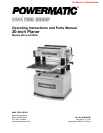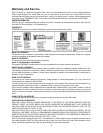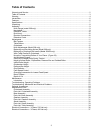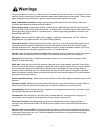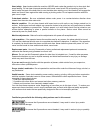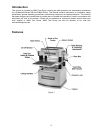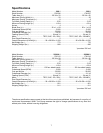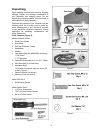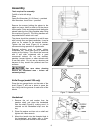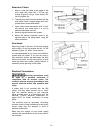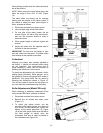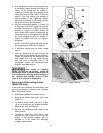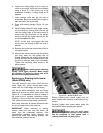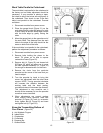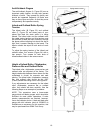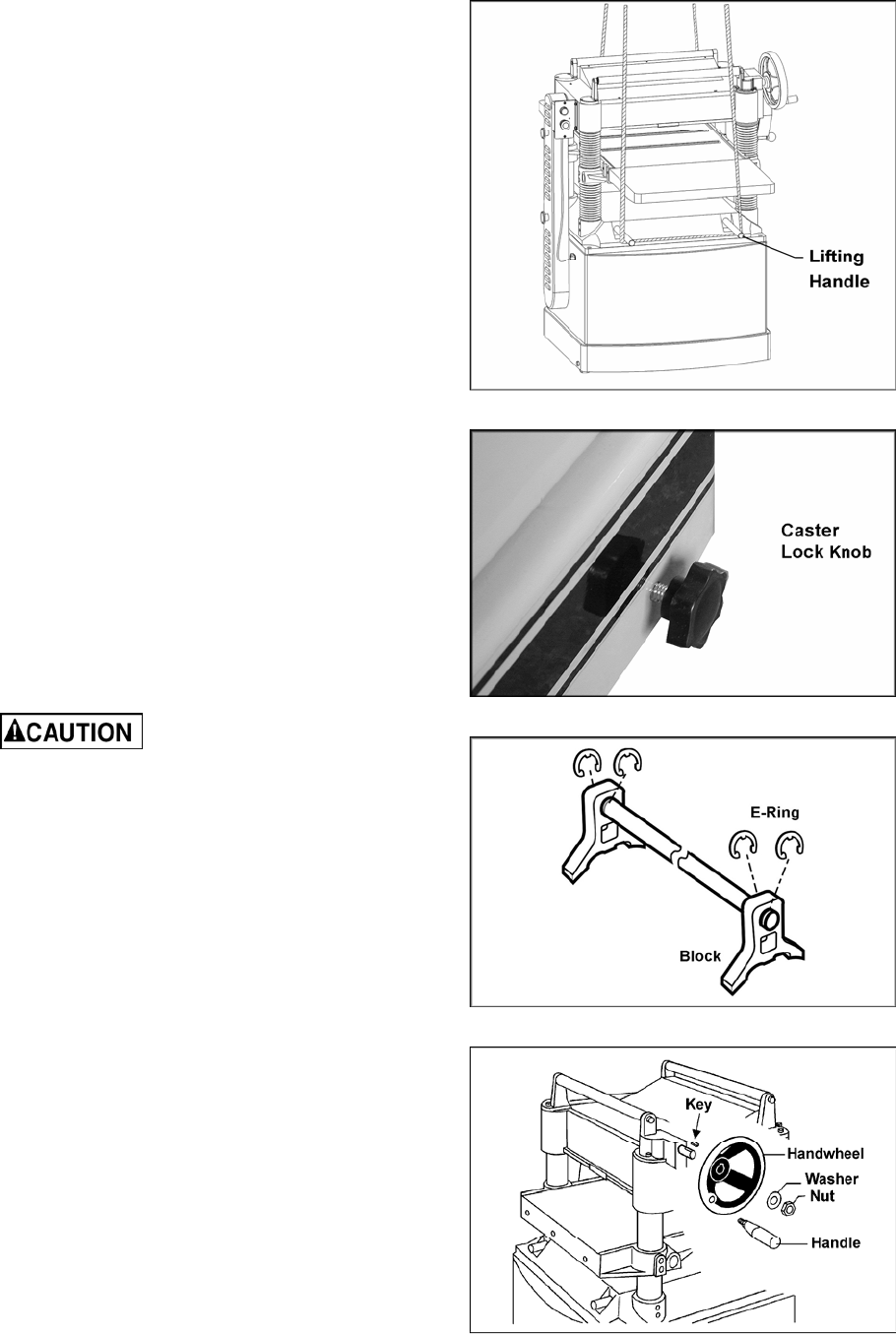
9
Assembly
Tools required for assembly:
Forklift or hoist with slings
Pliers
Open-End Wrenches (10,12,19mm) – provided
Hex Wrenches, 4 and 5mm – provided
Remove the screws holding the planer to the
pallet and use a forklift or hoist to lift the planer
off the pallet. Forks and straps should always be
placed under the four lifting handles when lifting
this machine (Figure 5). The lifting handles can
be pushed back in when not in use.
The planer should be operated in a well-lit area
with a sturdy floor and good ventilation. It can be
rolled on its casters to the desired location.
Tighten the lock knob (Figure 6) to prevent
movement during operation or adjustments.
Exposed surfaces, such as tables, rollers,
cutterhead, etc., have been given a protective
coating at the factory. This should be removed
with a soft cloth moistened with a good
commercial solvent. Do not use acetone,
gasoline, lacquer thinner, or other solvents with
a low flash point. Do not use an abrasive pad
because it may scratch the polished cast iron
surfaces.
Use care when cleaning
around the cutterhead area – knives are
extremely sharp!
Knife Gauge (model 209 only)
Place the two gauge blocks on the ends of the
shaft (Figure 7) and use a pliers to press the
four e-rings into the grooves on each side of the
blocks.
Handwheel
1. Remove the nut and washer from the
gearbox shaft, and place the handwheel
onto the shaft (Figure 8), making sure it is
oriented so the handwheel slips over the
key.
2. Place flat washer and hex nut on shaft and
tighten with 19mm wrench.
3. Mount the handle into the threaded hole in
the handwheel, and tighten with a 12mm
wrench placed over the flat on the handle.
Figure 5
Figure 6
Figure 7 – Model 209 only
Figure 8



